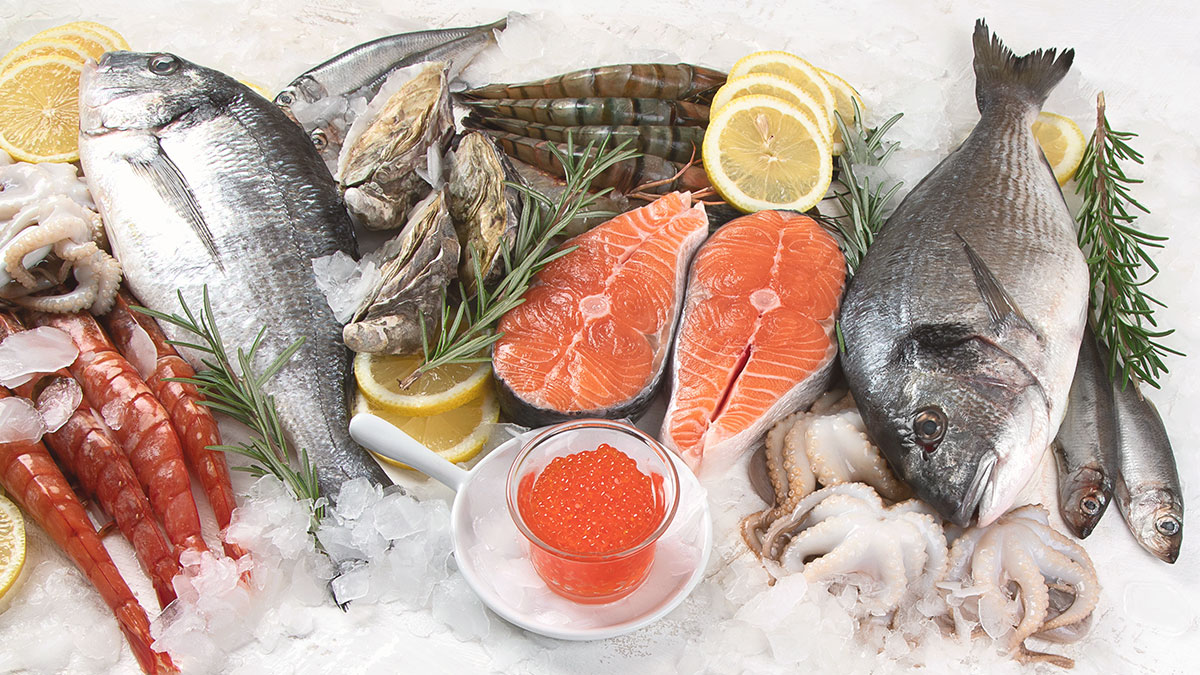<p>By: Steve Markenson, Vice President, Research & Insights, FMI</p><div class="mg-image–circular" style="float:right;margin:10px;"><img src="https://www.fmi.org/images/default-source/blog-images/fresh-seafood-on-ice.jpg?sfvrsn=c5260349_1" sf-constrain-proportions="true" sf-custom-thumbnail="true" width="600" alt="Fresh seafood" sf-size="100" /></div><p>It is no secret that the path to the seafood department is not as heavily traveled as it was at the height of the pandemic a few years ago. Seafood sales at retail, whether measured in units or dollars, were on an upward trajectory in 2020 and 2021. However, 2022 and 2023 proved to be a very different story for seafood as the category took a step backward. Overall seafood sales have fallen back to pre-pandemic levels in units (only up 0.7%), while dollars are up (+26.2%) but that was driven by inflation. This year’s <a href="https://www.fmi.org/forms/store/ProductFormPublic/power-of-seafood-2024"><em>Power of Seafood</em></a> chronicles how the who, where, what and why of seafood consumption has evolved and the impact of current economic conditions, most notably inflation.</p><h5>Who Is Buying Seafood?</h5><p>Seafood consumers have stayed the course, continuing to eat seafood at least two times a week. The frequent seafood consumer, representing 30% of Americans, continues to be an attractive shopper for retailers as they are an affluent and educated group who are big grocery spenders. The fact is when seafood is in a shopper’s basket, the ring is more than twice than when it is not ($100 vs. $48). The decrease in units can be found in our discussions with these shoppers when they talk about incorporating seafood in casseroles, as an add-on to pasta or in other more cost-effective ways. Meanwhile, the share of non-seafood eaters continues to be significant (37%).</p><h5>How are Seafood Consumers Shopping?</h5><p>Shoppers continue to purchase from a wide array of merchants for their seafood. A significant portion of seafood shoppers say their primary store for groceries is not their primary store for seafood. Choosing their primary seafood store has changed as the influence of price on their selection of seafood and other items has increased. But, when faced with the decision of what they are going to put in the basket, quality and taste still rule the day. This takes me back to the value matrix explored in our 2023 <a href="https://www.fmi.org/our-research/research-reports/u-s-grocery-shopper-trends"><em>U.S. Grocery Shopper Trends</em></a> report in an effort to understand shopper purchase decisions.</p><h5>What Types of Seafood are Shoppers Buying?</h5><p>The desire for convenience has helped the demand for foodservice seafood and sushi, especially in comparison to pre-pandemic levels. Meanwhile, market conditions have been favorable for crabs, anchovies and sardines. Some segments of seafood are not doing as well. Despite low inflation in the seafood category for 2023, frozen and fresh seafood overall took a step backwards. The perception that seafood is expensive and, for some, a luxury or indulgence has resulted in food dollars being spent elsewhere in 2023.</p><h5>What do Shoppers Know About Sustainability?</h5><a href="https://www.fmi.org/forms/store/ProductFormPublic/power-of-seafood-2024" class="-align-right" style="box-shadow:rgb(152, 152, 152) 2px 2px 6px;float:right;margin-left:20px;"><img sf-custom-thumbnail="true" src="https://www.fmi.org/images/default-source/blog-images/power-of-seafood-sm.jpg?sfvrsn=929216fc_1" style="box-shadow:rgb(152, 152, 152) 2px 2px 6px;float:right;" sf-size="100" width="300" alt="The Power of Seafood" sf-constrain-proportions="true" /></a>
<p>Shoppers have an interesting relationship with sustainability when it comes to seafood. While they recognize its importance and acknowledge that sustainability influences their decisions about where to shop and what seafood to buy, there is also a sense of confusion surrounding the topic. This is particularly evident when you ask shoppers about farm-raised and wild-caught seafood. While wild-caught is preferred two to one over farm-raised, four in ten shoppers have no preference. When we talk to shoppers about their preferences, there is clearly confusion and misconceptions about the options. Food retailers and the industry could be a valuable resource for helping shoppers navigate these unclear and uncertain waters with more information and education.</p><p>This is just the tip of the iceberg of what is covered in the <a href="https://www.fmi.org/forms/store/ProductFormPublic/power-of-seafood-2024"><em>Power of Seafood</em></a> report. Do you want to know more about seafood cooking habits, perceptions of aquaculture, concerns about sustainability, the role of health and well-being and so much more? The <a href="https://www.fmi.org/forms/store/ProductFormPublic/power-of-seafood-2024"><em>Power of Seafood</em></a> provides plenty of data and insights on these issues and more in the seafood department.</p><p><a href="https://www.fmi.org/forms/store/ProductFormPublic/power-of-seafood-2024" class="button">Download the Power of Seafood 2024</a></p>
[#item_full_content]



